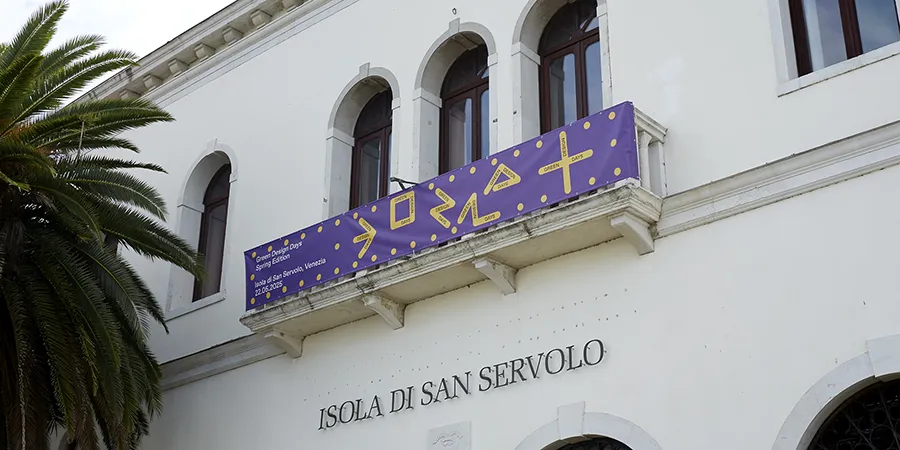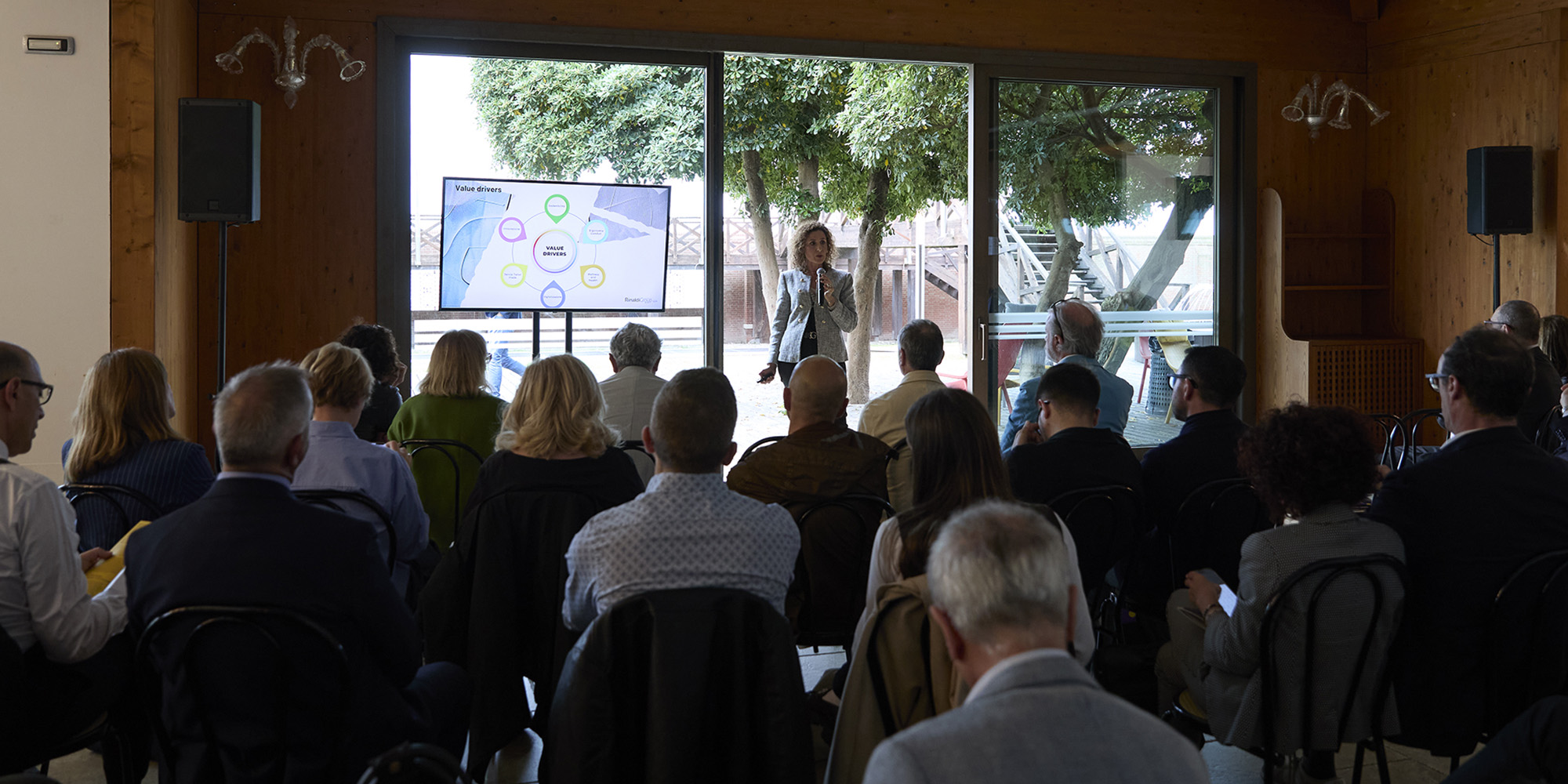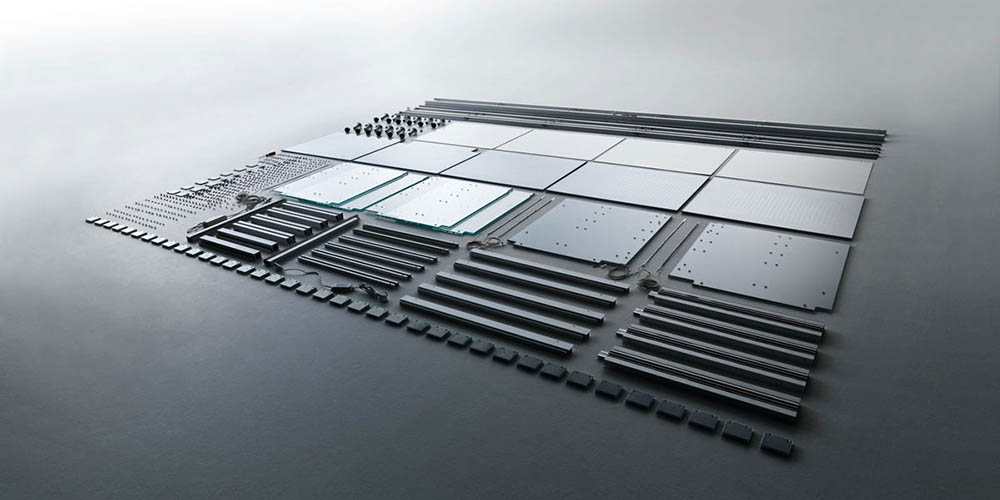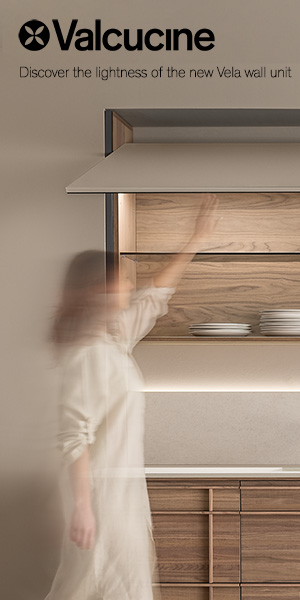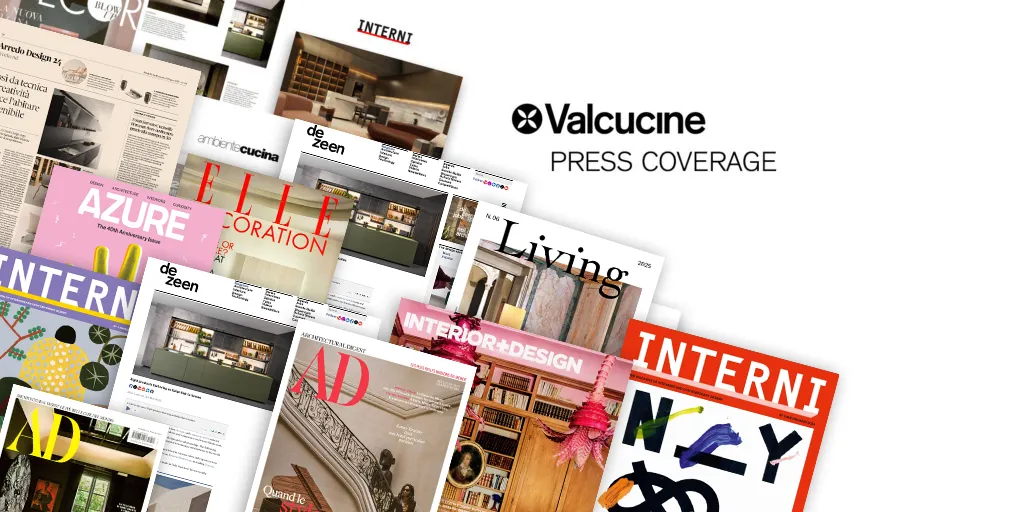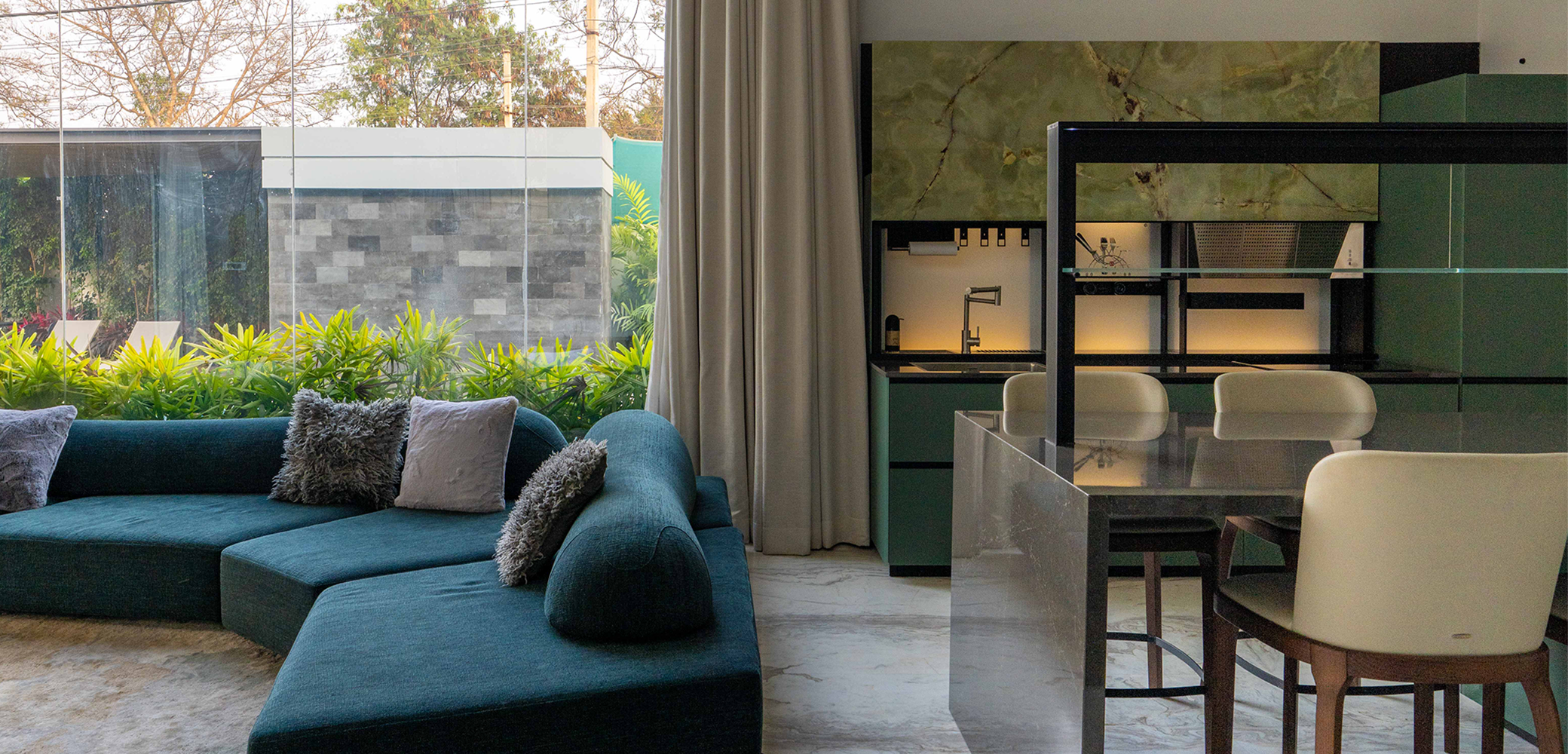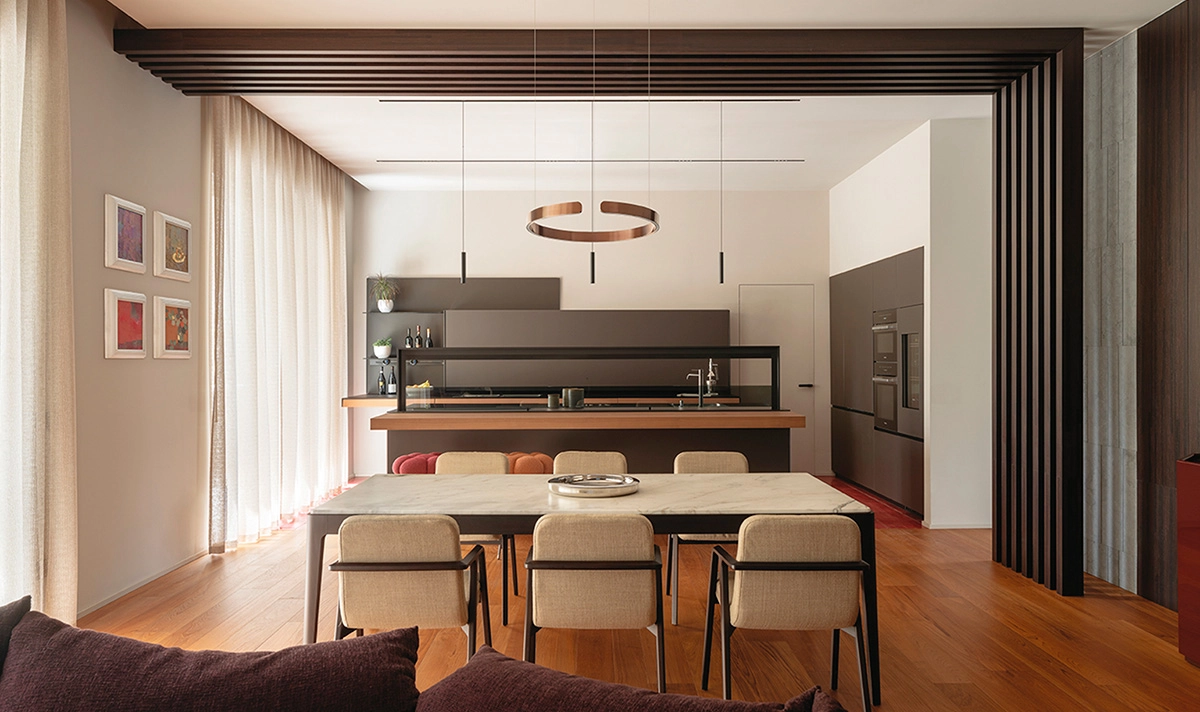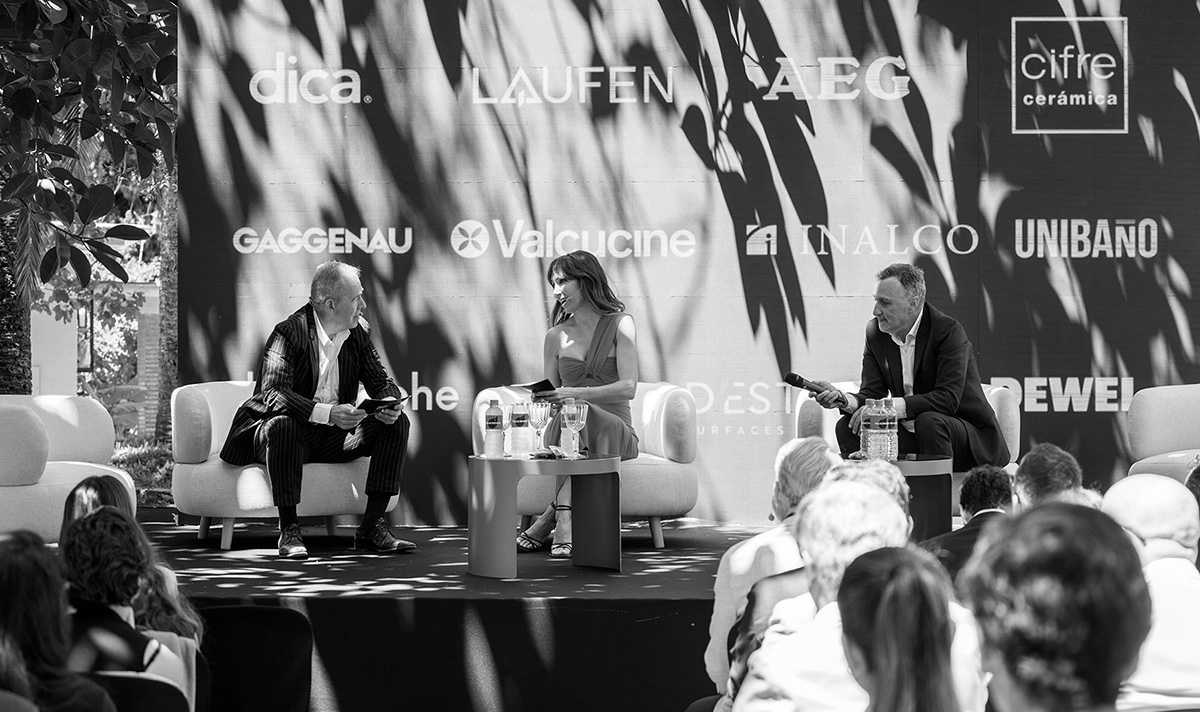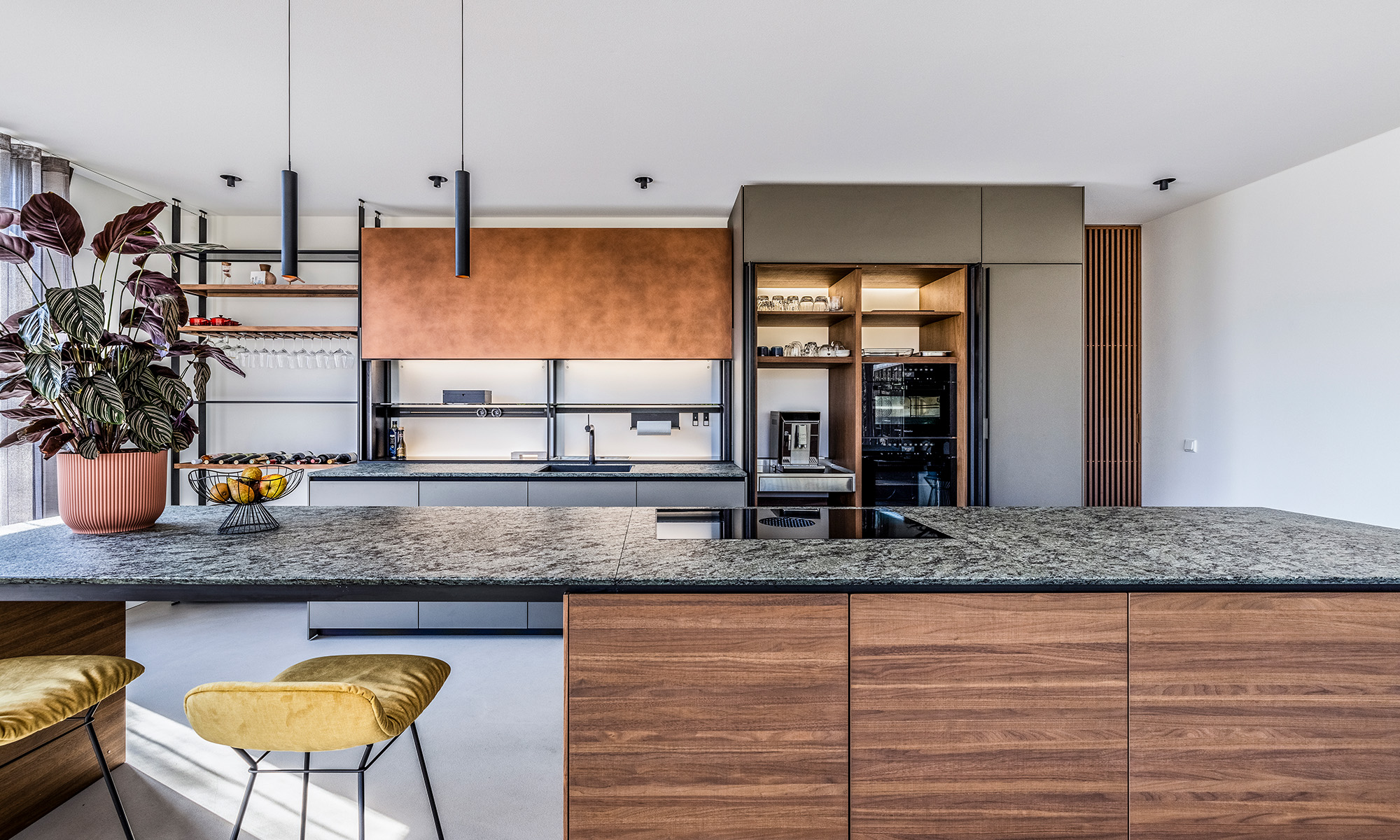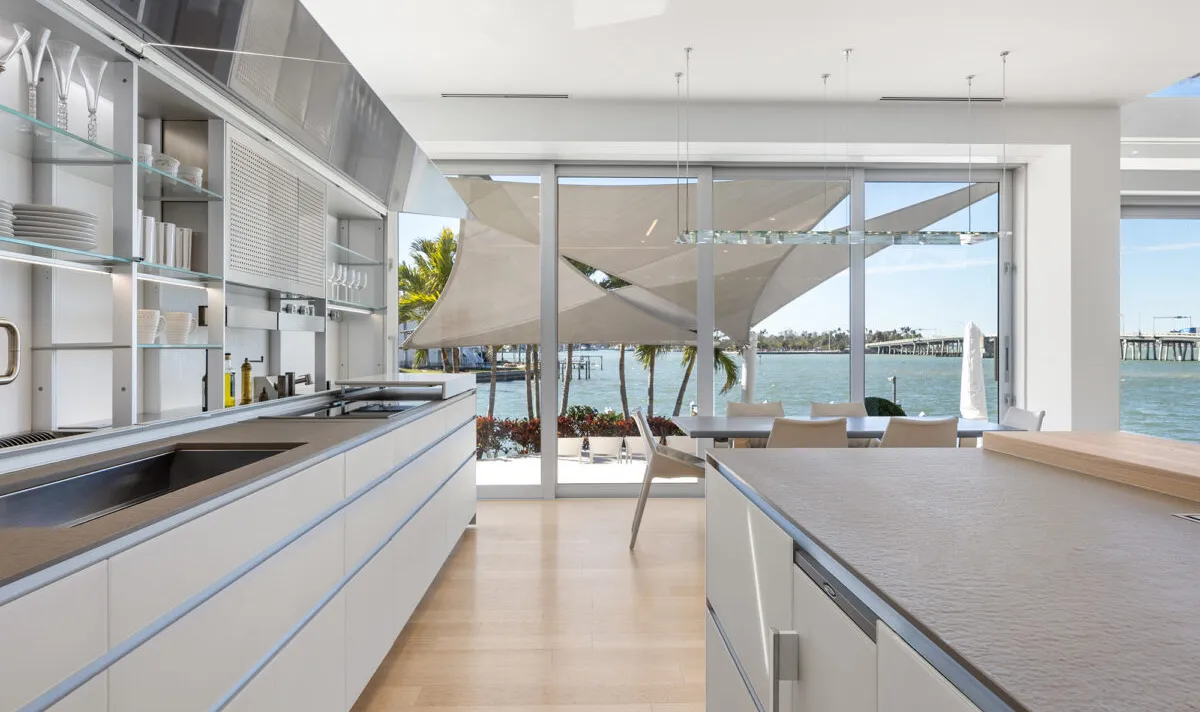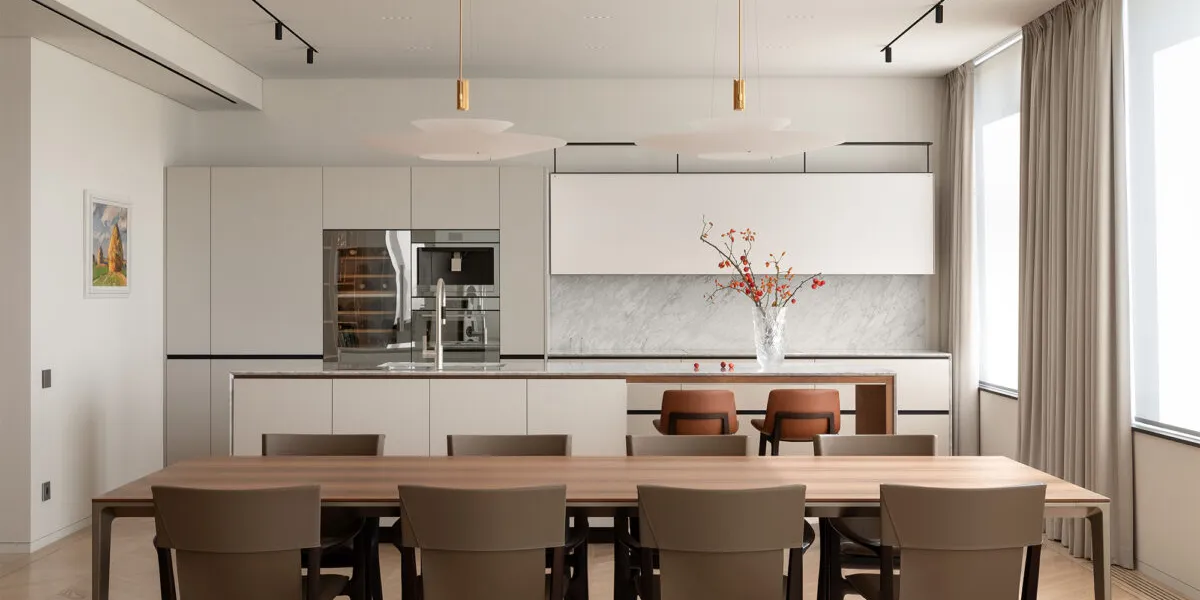Valcucine at Green Design Days: commitment to sustainability
At the heart of the Spring Edition of the Green Design Days, an event organized by FederlegnoArredo to celebrate the Federation's 80th anniversary, Valcucine offered a reflection that goes beyond good intentions.
On the stage of the Green Practice panel, dedicated to concrete experiences in the wood-furniture supply chain, Daniele Prosdocimo, the company's Marketing Manager, posed a key question: “What truly makes a sustainable product desirable in the eyes of the consumer?
Green Design Days presented itself as a widespread cultural platform, capable of traversing territories and languages, and of uniting companies, designers, researchers and citizens in an open discussion. The programme full of talks, lectures, projects, screenings and workshops emphasised the plurality of points of view, the importance of research and the need to put ideas, good practices and new methods of doing things back into circulation.
From rhetoric to perceived value
According to the research “Keys to Making Sustainable Products Mainstream” conducted by BCG, 80% of people feel disillusioned with environmental progress. Only 20% believe they can make an impact through their choices. Price remains the dominant lever (80%), while fewer than 10% purchase for ethical reasons. However, between 20% and 43% of respondents are willing to choose sustainable products if supported by tangible, functional, or aesthetic benefits.
The data shows that environmental commitment alone is not enough. To be relevant, it must become tangible value for those who choose, purchase, and live with a product. The real challenge today is transforming corporate intentions and values into tangible levers capable of inspiring concrete actions by consumers. Sustainability, in other words, must become an authentic desire. To make it perceived as such, it must be demonstrated that it is not only about saving the planet, but also about genuinely improving the quality of daily life.
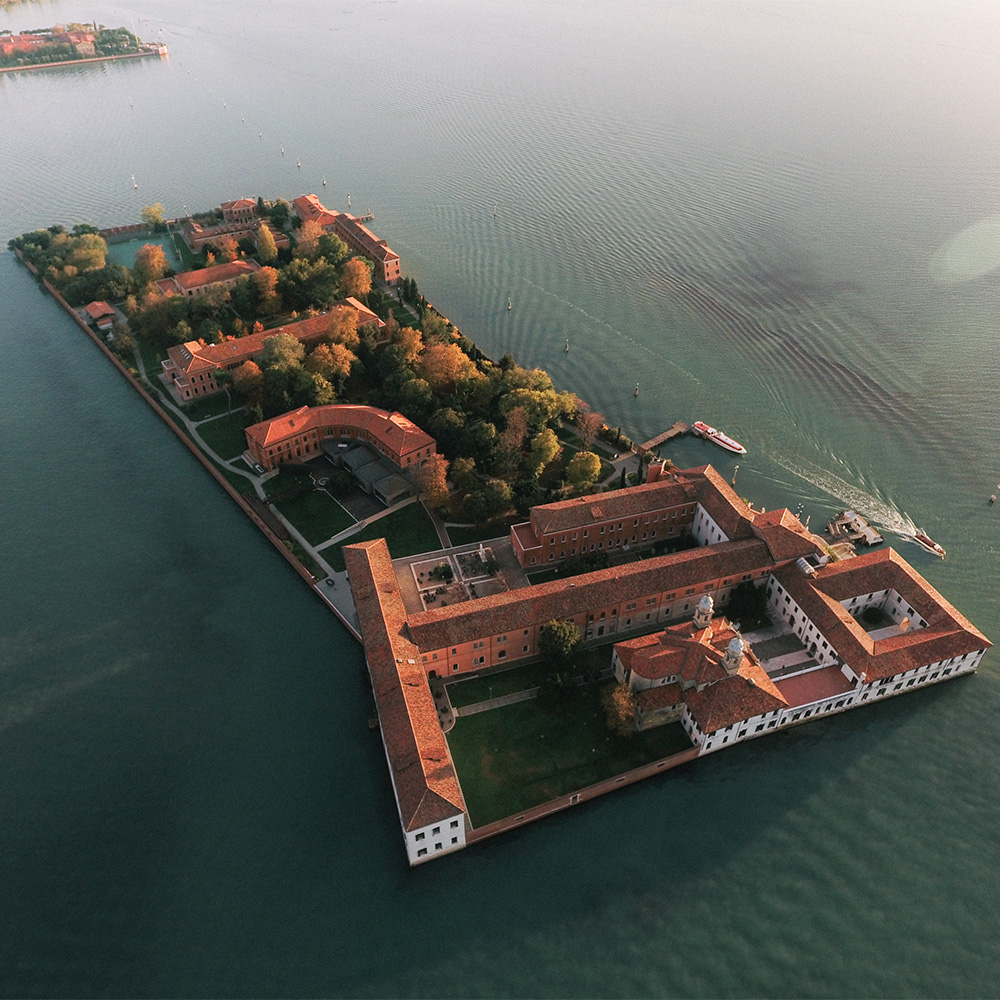
San Servolo (Venice) island
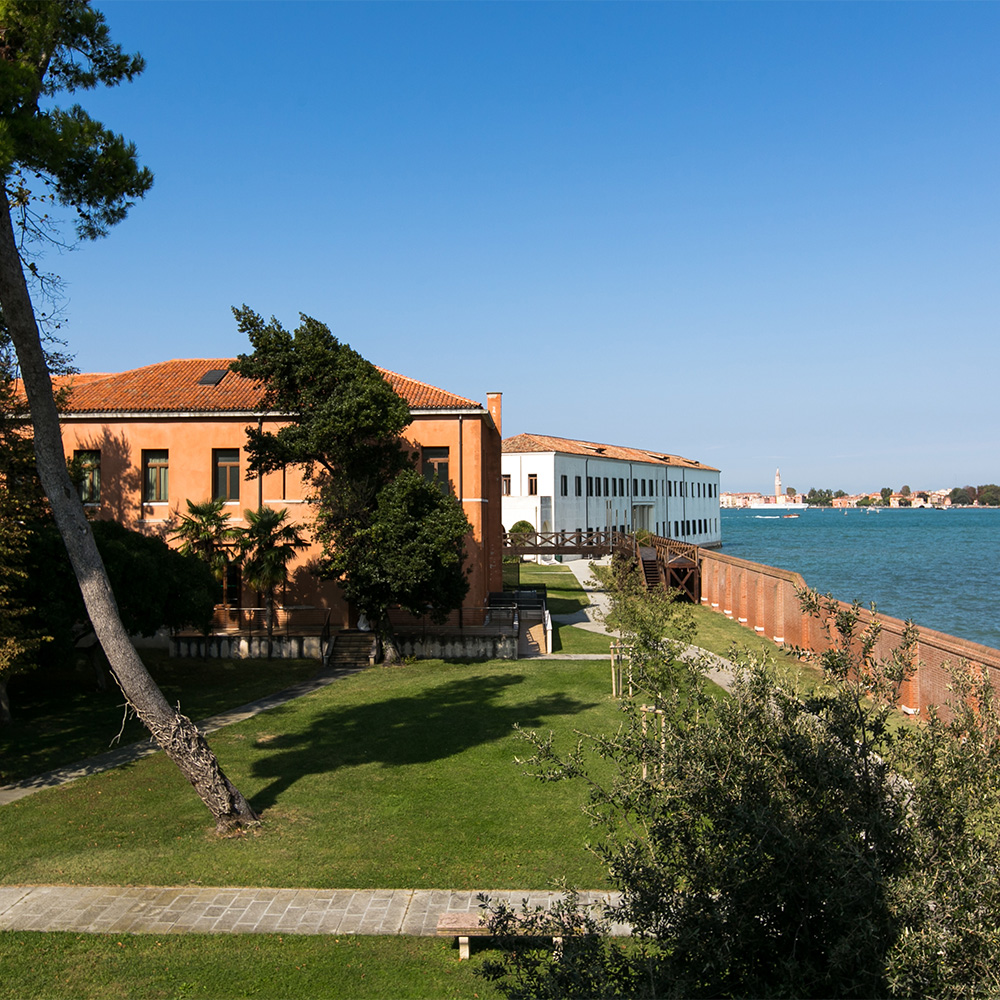
The tangible benefits of responsible design
Valcucine's approach stems from the balance between desirability and the concrete impact on daily life and the environment, demonstrating that environmental benefits can go hand in hand with personal well-being. This method integrates innovation, sustainability, well-being, and timeless durability at every stage of the production cycle, from material selection to the daily user experience. Each of these values corresponds to concrete actions and conscious choices—real advantages that benefit both the environment and those who live with the kitchen every day.
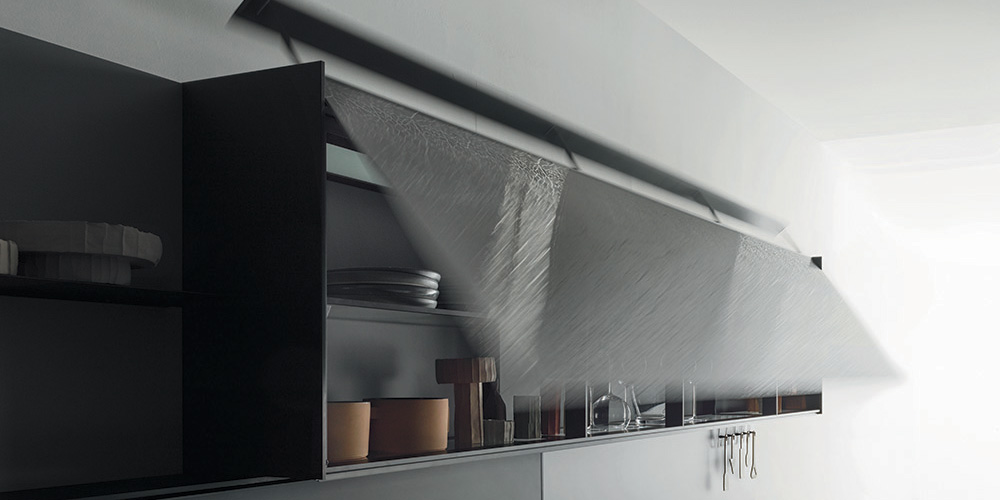
Valcucine Aerius wall unit
Innovation is never an end in itself; every technology is created to simplify daily life. The Aerius wall unit, with its balance-opening mechanism, eliminates hinges and pistons—components most prone to wear—and uses the inexhaustible force of gravity to ensure smooth and constant movement over time. V-Motion, on the other hand, introduces a touchless system that offers an immediate and intuitive user experience, designed to adapt naturally to daily movements. Lastly, with Logica Celata, the kitchen transforms into integrated architecture, perfectly aligned with contemporary living spaces and needs.
Invitrum base units
Sustainability is an integral part of Valcucine's industrial culture and guides every stage of the design process. Vitrum, Valcucine's glass, is fully recyclable; water-based paints provide additional environmental protection. With the Invitrum base system, Valcucine has created the world's first kitchen in glass and aluminum, which produces no waste at the end of its life. The use of only aluminum and glass—both inert materials—and the specific design ensuring only mechanical joints instead of adhesives, guarantee the complete elimination of toxic emissions.
A distinctive feature of the Friulian brand's design philosophy is dematerialization, the reduction of structures to the essentials to optimize resources and functionality. This approach allows, for example, the use of up to 85% less material in a Valcucine door compared to a traditional one, without compromising strength and durability over time.
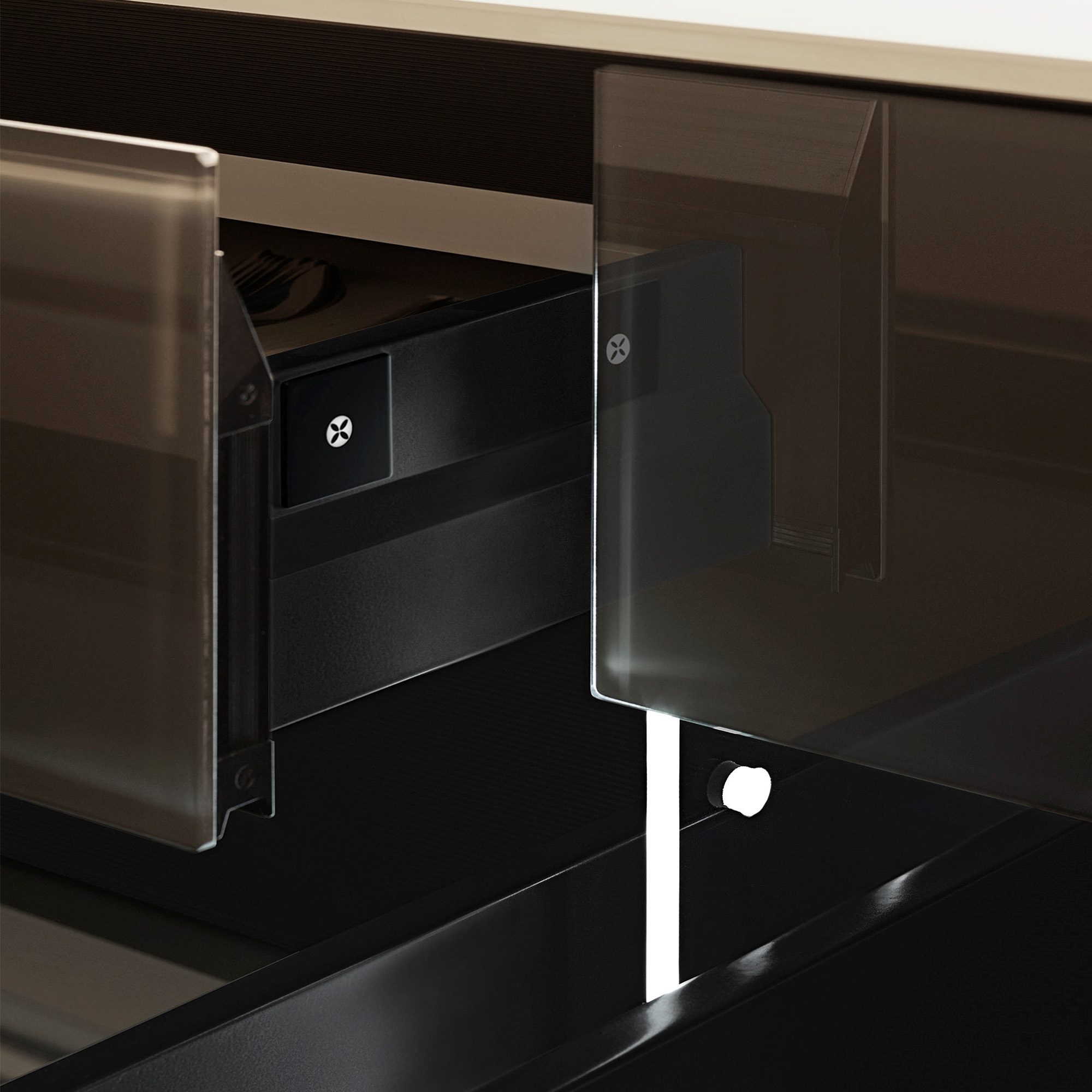
Artematica door
An emblematic example is the Artematica® door in natural stone: thanks to an anodized aluminum frame and an aesthetic panel only 5 mm thick, Valcucine offers the lightest natural stone kitchen on the market. The integration of a composite honeycomb panel with carbon fiber further ensures its strength, increasing impact resistance. This innovative solution protects the performance of hinges and guides, even on large elements such as base unit drawers (up to 120 cm), wall units, columns, and dishwashers.
This innovative solution protects the performance of hinges and guides, even on large elements such as base unit drawers (up to 120 cm), wall units, columns, and dishwashers.
The theme of well-being is addressed through ergonomics, material quality, and light management. Deeper worktops, customizable heights, and intuitive openings combine with the V-Light system, which adjusts lighting according to the circadian rhythm, improving psychophysical comfort.
Finally, timeless durability is a cultural response to the logic of planned obsolescence and rapid consumption. It is not only about material resistance but about design that aims to outlast trends. Finishes, craftsmanship, and aesthetic care create a beauty that does not wear out or degrade over time. The Genius Loci drawers are an example: they weave noble materials and manual craftsmanship into a narrative that withstands time, taste, and trends.
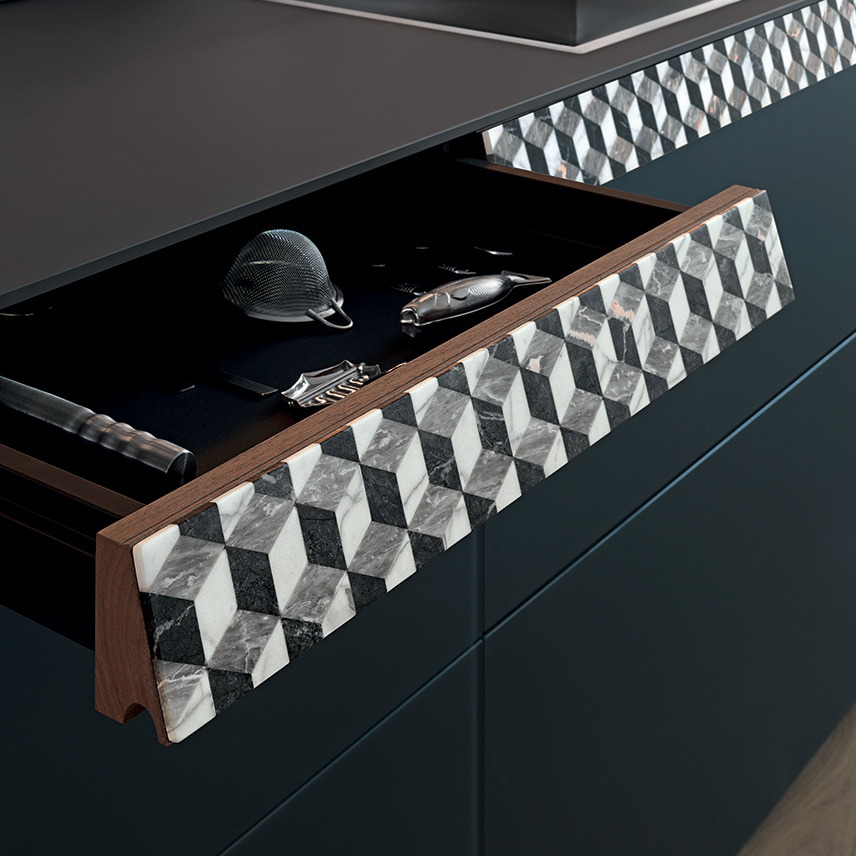
Genius Loci Drawer in Marble Cubes
A systemic vision
Valcucine's merit lies not only in its ability to produce responsibly but also in making this responsibility transparent, measurable, and recognizable according to international standards.
It is the only kitchen company capable of contributing up to 12 LEED credits—the highest in the market—to certified building projects, thanks to a comprehensive mapping of its collections according to the LEED v4.1 protocol.
A technical achievement, but also an explicit declaration of method: transforming design values into verifiable criteria, giving concreteness and credibility to every sustainability choice.
A paradigm shift
In the age of eco-fatigue, where the inflation of green messages has generated skepticism and communication saturation, Valcucine's intervention at the Green Design Days opens a new front: shifting the narrative of sustainability from “why it's right” to “why it's beneficial.”
It is a cultural challenge, even before a communicative one, aiming to redefine the relationship between design and consumption in a more mature, informed, and pragmatic way.
An approach where beauty does not oppose responsibility and demonstrates, once again, how every design choice can become an active gesture toward more conscious living, capable of combining the urgency of the present with a vision for the future.
Ph. Ilaria Zennaro / Joyride International, courtesy FLA Plus
